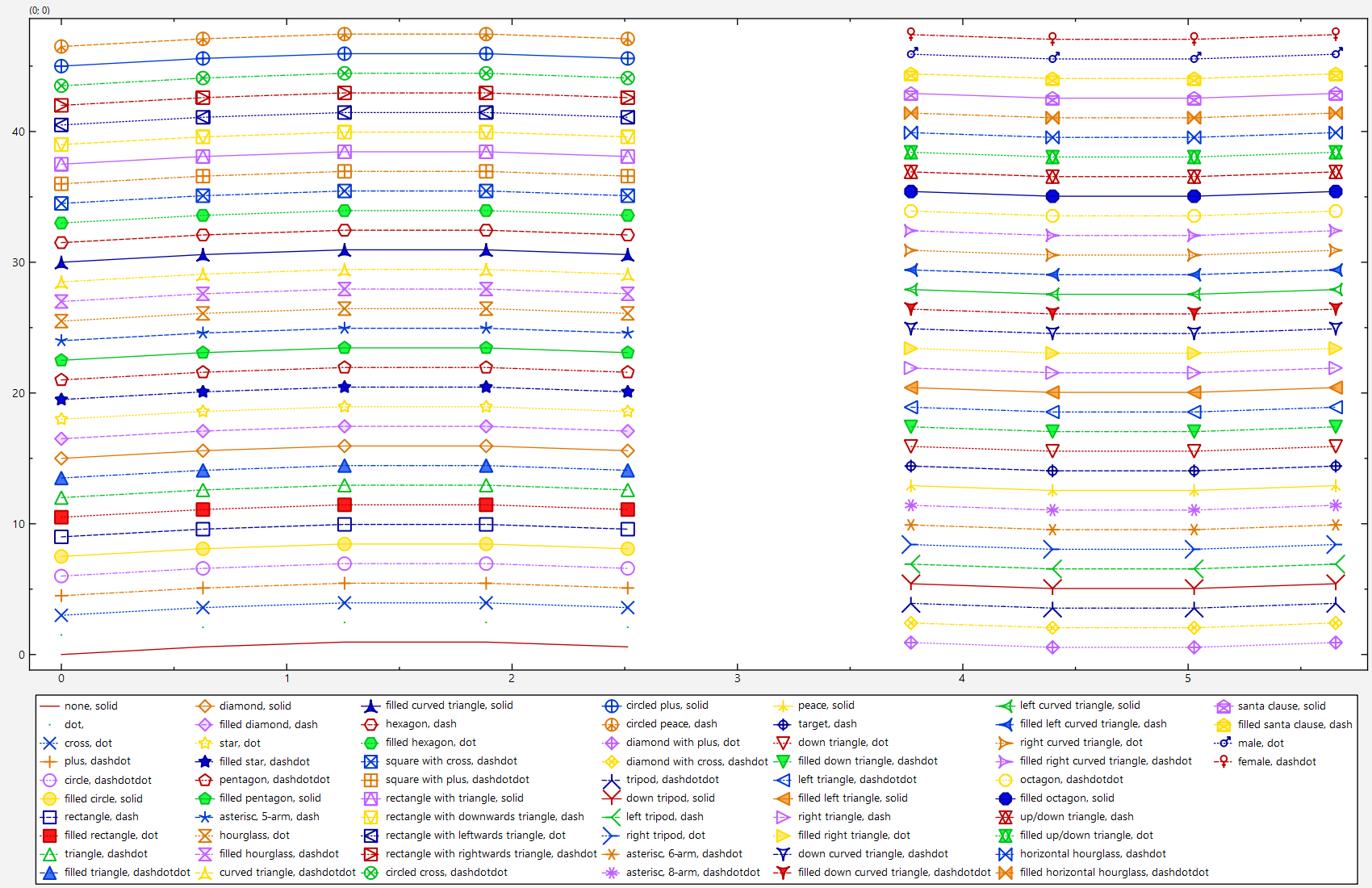 |
JKQTPlotter trunk/v5.0.0
an extensive Qt5+Qt6 Plotter framework (including a feature-richt plotter widget, a speed-optimized, but limited variant and a LaTeX equation renderer!), written fully in C/C++ and without external dependencies
|
 |
JKQTPlotter trunk/v5.0.0
an extensive Qt5+Qt6 Plotter framework (including a feature-richt plotter widget, a speed-optimized, but limited variant and a LaTeX equation renderer!), written fully in C/C++ and without external dependencies
|
This project (see ./examples/symbols_and_styles/) simply creates a JKQTPlotter widget (as a new window) and adds a single line-graph (a sine-wave). Data is initialized from two QVector<double> objects.
The source code of the main application can be found in symbols_and_styles.cpp. Mainly several graphs are generated in a loop and then different symbol and line styles are applied to the graph (set by graph->setSymbolType() for the symbol and graph->setLineStyle() for the line style). The colors are set automtically from an internal default palette. The main loop looks like this:
In addition to the symbol type and line style, you can also alter the size of the symbols (graph->setSymbolSize(14)), the line-width used to draw them (graph->setSymbolLineWidth(1.5)) and the line width of the graph line (graph->setLineWidth(1)). If you want to switch off the line altogether, use graph->setDrawLine(false).
Note: There are additional, more advanced options for styling the graphs. See the example Advanced Line and Fill Styling for details.
The result looks like this:
